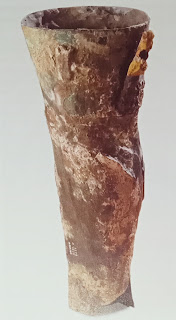History of Artificial limb
Artificial limb (c. 550 B.C.E)
The earliest written reference to an artificial limb occurs in an epic Indian poem"Rig-Veda", which was compiled between 35000 and 1800 B.C.E written in Sanskrit the poem includes a description of the amputation of the warrior Queen vishpla's leg during battle. Later fitted with an iron prosthesis by the Ashvins (celestial physicians),she returned to combat.
Most authorities doubt the story of Queen Vishpla, and turn to the Histories of Herodotus for the first plausible reference to a prosthetic limb. Herodotus describes how, in the mid sixth century B.C.E.,Hegesistratus of Eli's, a Persian soldier and seer imprisoned by the Spartans, was sentenced to death, and cut off part of his foot to escape from the stocks. Hegesistratus fashioned a wooden prosthesis to help walk the 30 miles (48 km) to Tregea, but unfortunately was captured by Zaccynthius and beheaded.
In the first century B.C.E., Pliny the elder wrote in his Natural history of Marcus Sergius, a Roman general who led his legion against Carthage in the second punic war(218 to 210 B.C.E.). The general sustained twenty-three injuries, necessitating the amputation of his right arm. An iron hand was fashioned to hold his shield, and he returned to battle. He fought four more battles, and had two horses killed from beneath him.
The oldest known prosthesis was discovered in a tomb in Capua, Italy, in 1859. Made of copper and wood, it dates to 300B.C.E., during the period of the Samnite Wars. Regrettably, the Capua leg did not survive another war it was destroyed in 1941 when the Museum of the Royal college of Surgeons was seriously damaged in an air raid.



Comments
Post a Comment